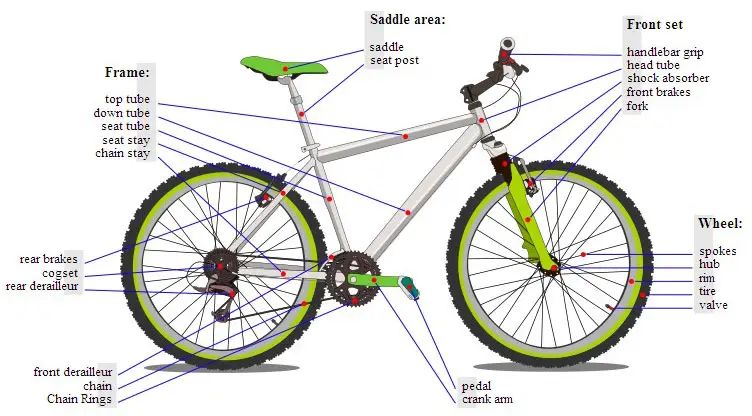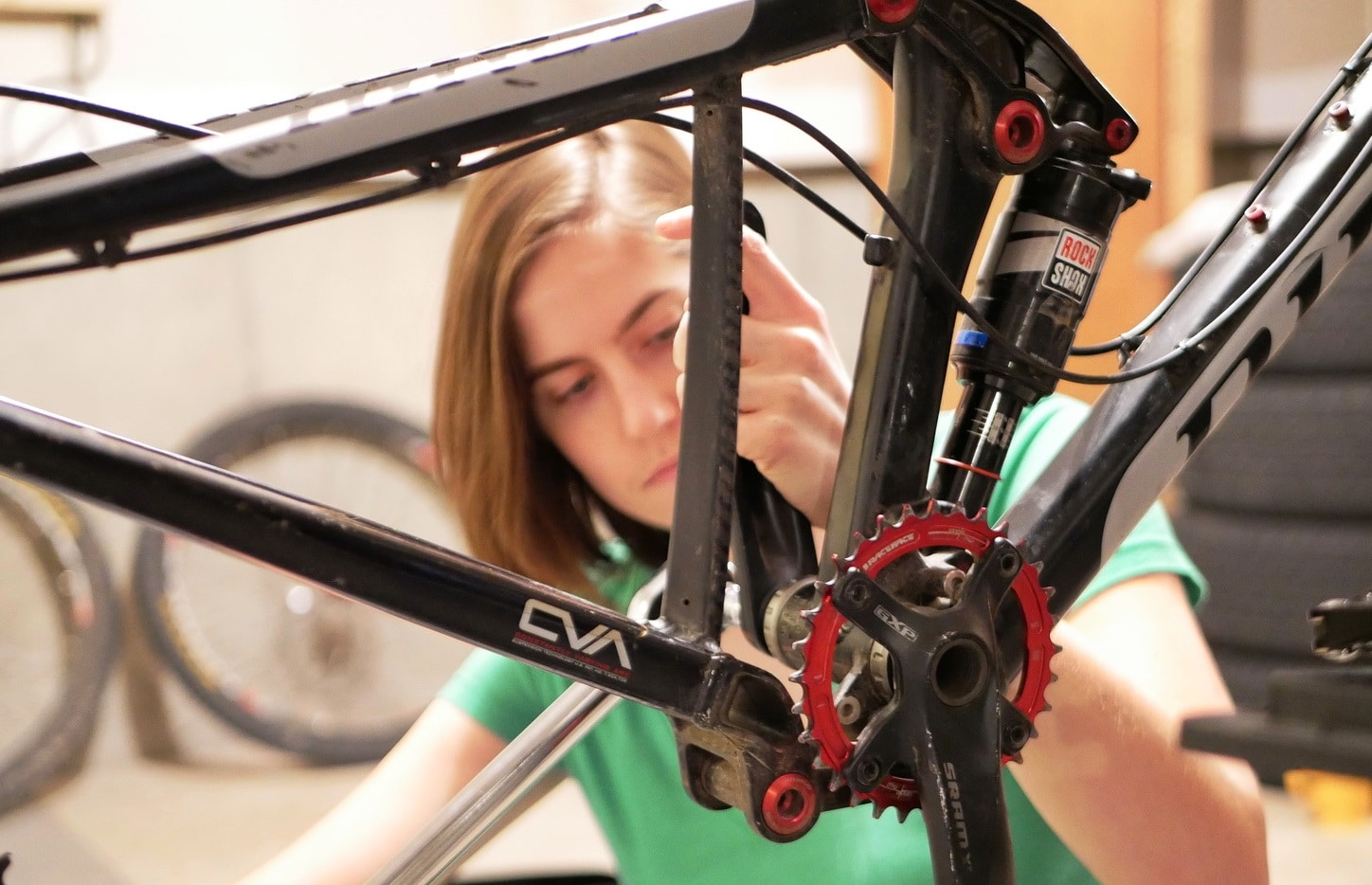Why Assemble Your Own Mountain Bike?
Building a mountain bike from scratch can be a cost-effective and rewarding experience for cycling enthusiasts. By assembling your own mountain bike, you can tailor the bike to your specific needs and preferences, ensuring a perfect fit and optimal performance. This approach also allows you to choose components that suit your riding style, terrain, and budget, making it an attractive option for those who want to make a mountain bike that meets their unique requirements.
One of the primary benefits of assembling your own mountain bike is the ability to customize the bike to your specific needs. By selecting components that are designed for your riding style and terrain, you can create a bike that is optimized for performance and comfort. For example, if you plan to ride on technical trails, you may want to choose a bike with a full-suspension frame and high-quality brakes. On the other hand, if you plan to ride on smoother trails, a hardtail frame with a lighter wheelset may be a better option.
In addition to customization, assembling your own mountain bike can also be a cost-effective option. By choosing components that are designed for your specific needs, you can avoid paying for features that you don’t need. This approach can also help you to avoid the markup that is often associated with buying a pre-assembled bike from a manufacturer or retailer.
Furthermore, assembling your own mountain bike can be a fun and rewarding experience. By taking the time to research and select the components that are right for you, you can create a bike that is truly unique and personalized. This approach also allows you to develop a deeper understanding of how your bike works, making it easier to perform maintenance and repairs.
Overall, assembling your own mountain bike is a great way to make a mountain bike that meets your specific needs and preferences. By choosing components that are designed for your riding style and terrain, you can create a bike that is optimized for performance and comfort. Whether you’re a seasoned cyclist or just starting out, assembling your own mountain bike can be a fun and rewarding experience that allows you to take your riding to the next level.
Choosing the Right Frame: The Foundation of Your Mountain Bike
When it comes to making a mountain bike, the frame is the foundation upon which all other components are built. Choosing the right frame is crucial to ensure a comfortable, efficient, and enjoyable ride. The frame material, size, and geometry all play a critical role in determining the overall performance and handling of the bike.
Mountain bike frames are typically made from one of three materials: aluminum, carbon fiber, or steel. Aluminum frames are durable, affordable, and offer a great balance of strength and weight. Carbon fiber frames are lightweight, stiff, and provide excellent power transfer, but are often more expensive. Steel frames are strong, durable, and offer a smooth ride, but can be heavier than other materials.
In addition to material, the frame size and geometry are also critical considerations. A frame that is too small or too large can result in an uncomfortable ride and poor handling. The geometry of the frame, including the head tube angle, seat tube angle, and wheelbase, also affects the bike’s stability, maneuverability, and climbing ability.
There are two main types of mountain bike frames: hardtail and full-suspension. Hardtail frames have a front suspension fork, but no rear suspension, and are ideal for cross-country riding and smooth trails. Full-suspension frames have both front and rear suspension, and are better suited for technical trails and downhill riding.
Some popular frame types include the Trek Fuel, Specialized Stumpjumper, and Giant TCX. These frames offer a great balance of performance, comfort, and value, and are suitable for a wide range of riding styles and terrain.
When selecting a frame, it’s essential to consider your riding style, terrain, and budget. By choosing a frame that meets your specific needs, you can create a mountain bike that is tailored to your unique requirements and provides an enjoyable and rewarding ride.
Selecting the Perfect Components: A Guide to Mountain Bike Parts
When it comes to making a mountain bike, selecting the right components is crucial to ensure a smooth, efficient, and enjoyable ride. The key components of a mountain bike include wheels, tires, brakes, gears, and suspension. Each of these components plays a critical role in determining the overall performance and handling of the bike.
Wheels are a critical component of a mountain bike, and there are several factors to consider when selecting the right wheels for your bike. The rim width, tire size, and hub type all affect the bike’s stability, maneuverability, and climbing ability. Popular wheel brands include Shimano, SRAM, and DT Swiss.
Tires are another essential component of a mountain bike, and there are several types to choose from, including cross-country, trail, and downhill tires. The tire’s tread pattern, width, and compound all affect the bike’s traction, rolling resistance, and durability. Popular tire brands include Maxxis, Continental, and Schwalbe.
Brakes are a critical safety component of a mountain bike, and there are several types to choose from, including rim brakes, disc brakes, and hydraulic brakes. The brake’s power, modulation, and reliability all affect the bike’s stopping ability and overall safety. Popular brake brands include Shimano, SRAM, and Magura.
Gears are another essential component of a mountain bike, and there are several types to choose from, including single-speed, 1x, and 2x drivetrains. The gear’s range, shifting performance, and durability all affect the bike’s climbing ability, efficiency, and overall performance. Popular gear brands include Shimano, SRAM, and Campagnolo.
Suspension is a critical component of a mountain bike, and there are several types to choose from, including hardtail, full-suspension, and dropper post suspension. The suspension’s travel, damping, and adjustability all affect the bike’s comfort, stability, and overall performance. Popular suspension brands include RockShox, Fox, and Manitou.
When selecting components for your mountain bike, it’s essential to consider your riding style, terrain, and budget. By choosing components that meet your specific needs, you can create a bike that is tailored to your unique requirements and provides an enjoyable and rewarding ride.
Assembling Your Mountain Bike: A Step-by-Step Guide
Assembling a mountain bike requires attention to detail, patience, and a basic understanding of bike mechanics. By following these steps, you can ensure a safe and enjoyable ride on your newly built mountain bike.
Step 1: Prepare the Frame
Before assembling the bike, make sure the frame is clean and free of any debris. Remove any protective covering from the frame and components, and apply a small amount of lubricant to the pivot points.
Step 2: Install the Wheels
Install the front and rear wheels, making sure they are securely attached to the frame. Tighten the quick-release levers or nuts in a star pattern to ensure even pressure.
Step 3: Install the Brakes
Install the brake calipers, brake levers, and brake cables. Make sure the brake pads are properly aligned and the cables are securely attached to the frame.
Step 4: Install the Gears
Install the gear components, including the chainrings, cassette, and derailleurs. Make sure the gears are properly aligned and the chain is securely attached to the frame.
Step 5: Install the Suspension
Install the suspension components, including the fork and shock. Make sure the suspension is properly adjusted and the bike is sitting at the correct height.
Step 6: Adjust the Brakes and Gears
Adjust the brakes and gears to ensure proper function and performance. Make sure the brakes are properly aligned and the gears are shifting smoothly.
Step 7: Final Safety Checks
Perform a final safety check to ensure the bike is safe to ride. Check the brakes, gears, and suspension to make sure they are functioning properly.
By following these steps, you can ensure a safe and enjoyable ride on your newly built mountain bike. Remember to always follow proper safety protocols and seek professional help if you are unsure about any aspect of the assembly process.
Tuning and Adjusting Your Mountain Bike for Optimal Performance
Once you’ve assembled your mountain bike, it’s essential to tune and adjust the components to ensure optimal performance. This includes brake adjustment, gear tuning, and suspension setup. By fine-tuning your bike, you can improve its performance, comfort, and overall riding experience.
Brake Adjustment
Proper brake adjustment is critical for safe and effective braking. Make sure the brake pads are properly aligned and the brake cables are securely attached to the frame. Adjust the brake levers to ensure proper leverage and modulation.
Gear Tuning
Gear tuning is essential for smooth and efficient shifting. Make sure the derailleurs are properly aligned and the chain is properly tensioned. Adjust the limit screws to ensure proper shifting and prevent chain derailment.
Suspension Setup
Suspension setup is critical for optimal performance and comfort. Make sure the fork and shock are properly adjusted for your weight and riding style. Adjust the rebound and compression damping to ensure proper suspension performance.
Tips for Fine-Tuning Your Bike
Here are some tips for fine-tuning your mountain bike:
Check the tire pressure regularly to ensure proper traction and performance.
Adjust the brake pads regularly to ensure proper braking performance.
Check the chain regularly to ensure proper tension and prevent chain derailment.
Adjust the suspension regularly to ensure proper performance and comfort.
By following these tips, you can fine-tune your mountain bike for optimal performance and ensure a safe and enjoyable ride. Remember to always follow proper safety protocols and seek professional help if you are unsure about any aspect of the tuning and adjustment process.
Common Mistakes to Avoid When Building a Mountain Bike
Building a mountain bike can be a rewarding experience, but it can also be a complex and challenging process. To ensure a safe and enjoyable ride, it’s essential to avoid common mistakes that can compromise the performance and safety of your bike. Here are some common mistakes to avoid when building a mountain bike:
Improper Assembly
One of the most common mistakes when building a mountain bike is improper assembly. This can include incorrect installation of components, such as brakes, gears, and suspension. Make sure to follow the manufacturer’s instructions and take your time when assembling your bike.
Inadequate Safety Checks
Another common mistake is inadequate safety checks. Make sure to inspect your bike regularly to ensure that all components are properly installed and functioning correctly. Check the brakes, gears, and suspension to ensure that they are working properly and make any necessary adjustments.
Neglecting Maintenance
Neglecting maintenance is another common mistake that can compromise the performance and safety of your bike. Make sure to regularly clean and lubricate your bike’s components, and check for any signs of wear or damage.
Ignoring Manufacturer’s Instructions
Ignoring manufacturer’s instructions is another common mistake that can lead to improper assembly and safety issues. Make sure to read and follow the manufacturer’s instructions for each component, and take your time when assembling your bike.
Not Seeking Professional Help When Needed
Finally, not seeking professional help when needed is another common mistake that can lead to safety issues and compromised performance. If you’re unsure about any aspect of building your mountain bike, don’t hesitate to seek professional help from a qualified mechanic or bike shop.
By avoiding these common mistakes, you can ensure a safe and enjoyable ride on your newly built mountain bike. Remember to always follow proper safety protocols and seek professional help when needed.
Upgrading and Customizing Your Mountain Bike
Once you’ve built your mountain bike, you may want to consider upgrading or customizing it to improve its performance, comfort, or style. There are many ways to upgrade and customize your mountain bike, including swapping components, adding accessories, and modifying the frame.
Riding Your Dream Mountain Bike: Tips for a Safe and Enjoyable Ride
Now that you’ve built your dream mountain bike, it’s time to hit the trails and enjoy the ride. However, before you do, make sure to follow these tips for a safe and enjoyable ride.
Safety Checks
Before you start riding, make sure to perform a safety check on your bike. Check the brakes, gears, and suspension to ensure that they are functioning properly. Also, check the tire pressure and make sure that the tires are properly inflated.
Pre-Ride Inspections
Before each ride, perform a pre-ride inspection on your bike. Check the brakes, gears, and suspension to ensure that they are functioning properly. Also, check the tire pressure and make sure that the tires are properly inflated.
Riding Techniques
When riding your mountain bike, make sure to use proper riding techniques. Keep your weight centered over the bike, and use your body weight to steer the bike. Also, make sure to use proper braking techniques, such as using both brakes at the same time.
Trail Etiquette
When riding on trails, make sure to follow proper trail etiquette. Yield to other riders and hikers, and make sure to stay on designated trails. Also, make sure to respect the environment and other trail users.
Environmental Awareness
When riding your mountain bike, make sure to be aware of your surroundings and the environment. Avoid riding on sensitive habitats or areas that are closed to biking. Also, make sure to dispose of any trash or waste properly.
Responsible Riding
Finally, make sure to ride responsibly. Follow all local laws and regulations, and make sure to wear proper safety gear, such as a helmet and gloves. Also, make sure to ride within your ability level and avoid taking unnecessary risks.
By following these tips, you can ensure a safe and enjoyable ride on your newly built mountain bike. Remember to always follow proper safety protocols and respect the environment and other trail users.









